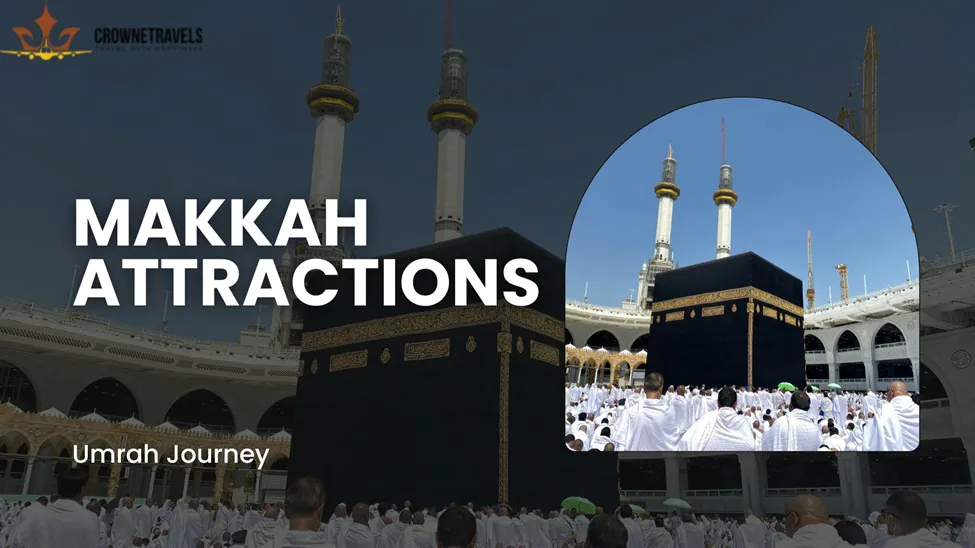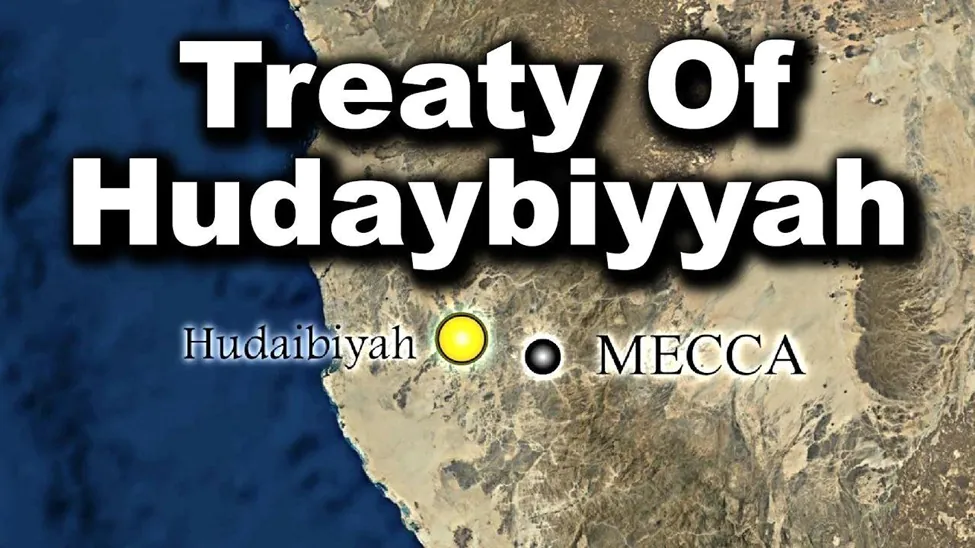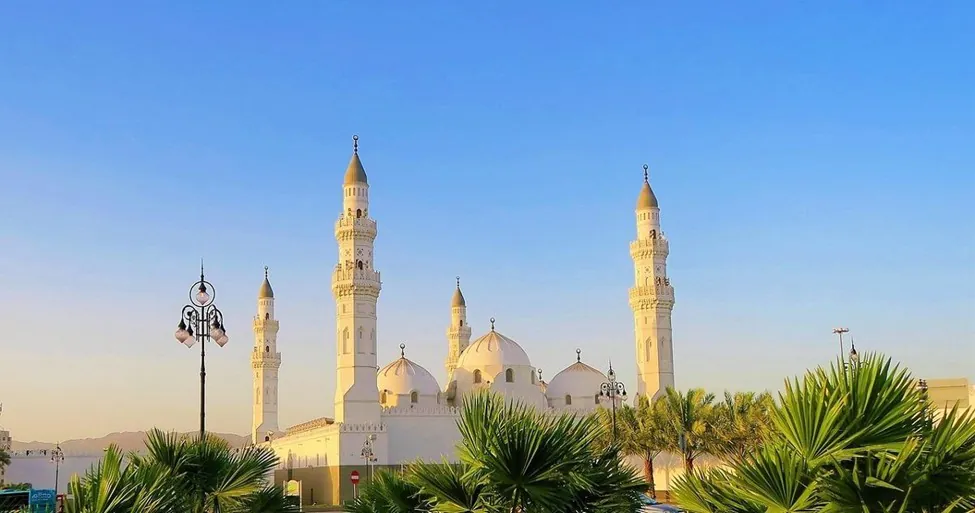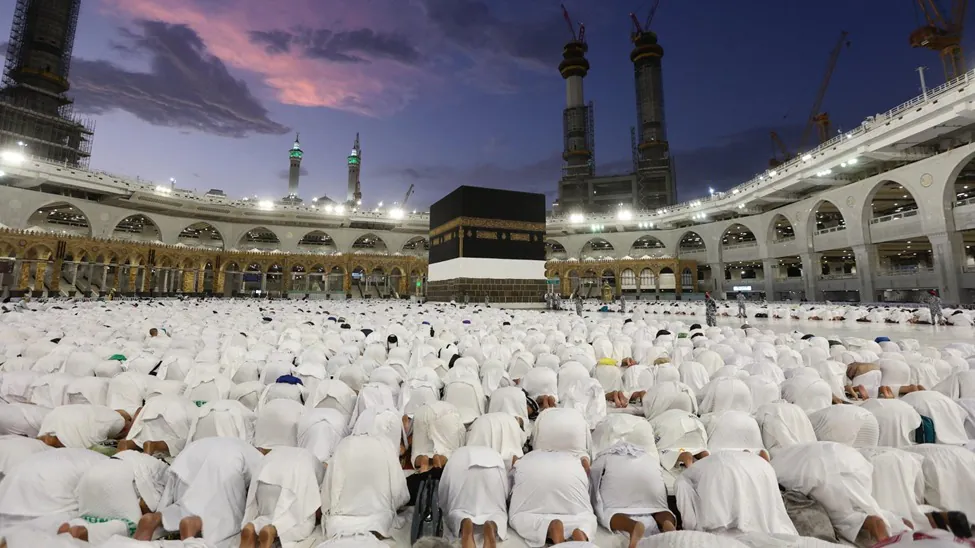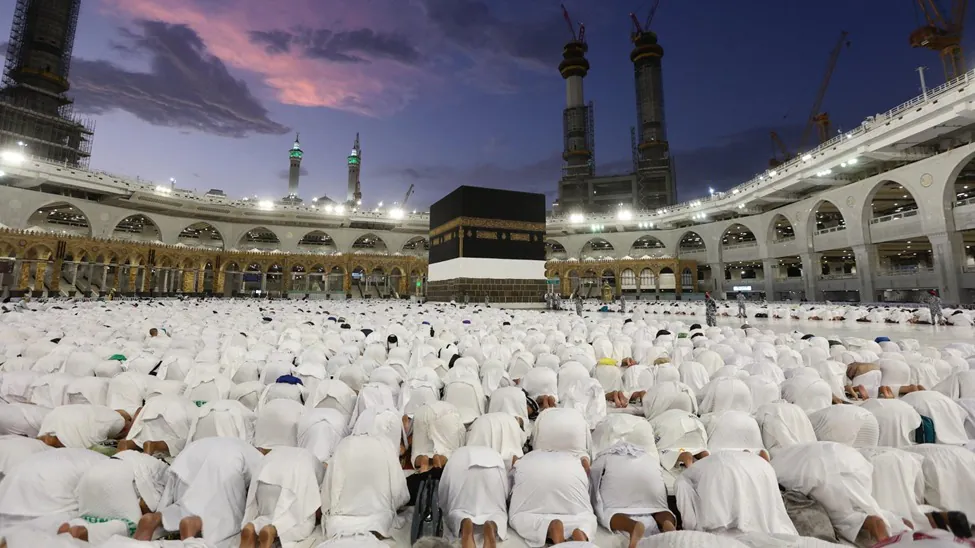The Makkah that receives millions of pilgrims yearly in a bid to seek spiritual fulfillment of the completion of the holy pilgrimage of Umrah is the most sought after location in the sacred city of the Islam religion. Besides the enormous honor that this religious city can grant religiously, it is possible to mention the historical sightseeing, the architectural sights, and the culture which also complement with the spiritual journey of the one who ever went to this religious city.
Even though the mission of going to Makkah is first and foremost to complete Umrah rituals, pilgrims frequently become inspired by the city with the rich traditions and beautiful sites that have been the place of observing centuries of the Islamic history. With sky-scraping minarets jutting out of the Arabian sky and primeval archeological locations where Prophet Muhammad (peace be upon him) used to walk on, Makkah is an exotic package of spirituality, and history.
Knowing about the different attractions that can be visited in Makkah would enable pilgrims to make the most out of their holy trip. Regardless of whether you are in search of relaxed contemplative time, history lessons or merely of an opportunity to experience the culture of this sacred city to the fullest, Makkah offers endless possibilities of spiritually enriching your experiences and leaving lasting vivid memories as well as an experience that you read about in Quran.
The Magnificent Masjid al-Haram
Makkah has its centerpiece, the giant mosque, Masjid al-Haram, which is the goal to call every Muslim to pilgrimage. This architectural marvel has within it the sacred Kaaba, the cube shaped structure used as the center point of Islamic prayer across all the globe. The fact that the mosque is currently in the process of its expansion is already able to host more than two million worshippers at the same time, which makes it absolutely stunning to look at with its sense of unity and devotion.
The complex forms a mosque with several levels which are linked together via escalator and air-conditioned walk areas to give comfort to the pilgrims of any age and capability whether those choosing comfortable and Affordable Umrah Package from USA with Flights, or others arriving independently. The marble floors never get warm even when it becomes hot in the Arabian sun, and the high standing minarets and the golden crescents produce a skyline, which happens to be so inspiring to every visitor. The new features added in it are the umbrellas that can be retracted to shut shade during the hot times, as modern technologies bring out the ancient forms of worship.
Those who do Umrah Pilgrimage will take a significant part of their time inside these sacred walls- fulfilling the Tawaf performance around Kaaba, and walking between Marwah and Safah hills. The spiritual power occupying the Masjid al-Haram is inimitable to the rest of the planet where prayers in dozens of languages play as a symphony of faith.
Jabal al-Nour and the Cave of Hira
Rising out of the scenery of the Makkah city, Jabal al-Nour (Mountain of Light) is a sacred place closely related to Prophet Muhammad (peace be upon him) owing to the fact that it was there that the first revelation of the Quran was received by the individual. Then one has the Cave of Hira (a small cave) where the Prophet used to meditate and reflect until his mission of prophethood began.
To get to the cave, there is a 1-2 hours, difficult ascent, depending on physical condition and weather situation. Rugged terrain is cut off with the rocky path providing pilgrims with time to reflect and pray as they make the trip to ascend up to this sacred site. A lot of visitors claim that a climb is a spiritual trip in its own right where each move took them nearer to comprehending what the Prophet went through.
On the top, the pilgrims receive a magnificent view of Makkah with eye-pleasing landscapes of the Masjid al-Haram and the city. The cave is in its original state modest, being about 4 meters long and 1.75 meters. This humble place saw one of the greatest events in the history of mankind when Angel Gabriel first came to Prophet Muhammad to spread the divine message which was to bring a change in manhood.
Jabal Thawr and Its Historic Cave
Jabal Thawr is another mountain that has massive historical importance because it forms a striking incident of Islamic history. The cave in this mountain is also where the prophet Muhammad (peace be upon him) and Abu Bakr (may Allah be pleased with him) turned to when they have taken the historic migration to Madinah during Hijrah.
The three days of their stay in this cave as depicted reminds them of the merits of faith in Allah, friendship as well as protection under the Circle of Divine Protection that are quite poignant to the Muslim pilgrims. This was an Islamic custom that Allah sent a spider which had spun its web and a dove had constructed its nest at the opening of the cave to disguise the whereabouts of the Prophet and his associate to avoid the eyes of his enemies.
The climb to the cave on the mountain of Jabal Thawr is not too draining as the climb on Jabal Al-Nour but still requires a slightly moderate physical undertaking. The midday is too hot to schedule phases of the pilgrims to visit at less convenient time (early morning or late in the afternoon). The cave provides the place to the solitary and silent meditations, which enable the visitors to interpret the courage and dedication of early Muslim community.
The Well of Zamzam
Among the precincts of Masjid al-Haram there is one of the holiest sources of water in Islam the Well of Zamzam. The name of this miraculous spring is the one which has never dried up over a period of more than 4,000 years delivering clean, refreshing water to a great number of pilgrims. The origins of the well lies in the account of the Hajar and her newborn son Ismail where Allah brought forth the spring as a moisture in the dry desert.
The availability of the Zamzam water is preserving the modern facilities, where the pilgrims can access it easily after their stay in Makkah. There are the refrigerated dispensers which are spread in places around Masjid al-Haram offering cool and filtered Zamzam waters, and there are the bottles which are obtained by pilgrims to give to their families and friends as blessed gift back home. Most pilgrims include drinking of Zamzam water as a daily ritual; they believed that drinking Zamzam water is both spiritually and physically beneficial.
Zamzam water is very different in its taste compared to tap water as numerous people explain, it is pure and fulfilling in a manner that appears to satisfy both the physical and spiritual thirst. This particular mineral composition of the water has been proved by scientific study to resist the colossal volume of water used daily by millions of people who visit the area.
Mina and Its Religious Significance
Situated just around 8 kilometers away, in Makkah, Mina has a particular significance when regarding Hajj season itself, but can also provide plenty of context in terms of Islamic history to the Umrah pilgrim. This is a small valleys town that transforms to be the biggest temporary city in the world during Hajj as millions of pilgrims come to worship creating a great show of organization and religious faith.
These three stone pillars in Mina are called Jamarat, the places that prophet Ibrahim (peace be upon him) threw the stones at Satan who tried to make him change his mind not to sacrifice his son as Allah ordered him to do so. These pillars can be viewed as strong signs of renouncing the temptation and undeviating faith in the guidance of gods.
Umrah pilgrims do not include the ritual of stone-throwing, but the visit to Mina will give them information about the whole pilgrimage process and history of Islam. The tent city, transportation systems, and the infrastructure which was established for Hajj can be seen as the evidence of the Saudi government interest in providing the pilgrims with the best and safe experience in terms of conducting pilgrimage.
Mount Arafat
The sacred mountain is Mount Arafat (Jabal Arafat) that is specifically connected with the Hajj ceremony; nevertheless, it plays one of the central and significant roles in the history of Islamic religion and pilgrims during Umrah also obtain another opportunity and touch their roots. That was the final pilgrimage of Prophet Muhammad which took place in this granite hill also known as Jabal al-Rahmah (Mountain of Mercy) as he delivered his final sermon.
It is roughly 70 meters in height with a white pillar at the top one can see the exact place where Prophet gave his historic speech. These were his statements at this place that stressed popular equality, rights of women, and fulfillment of Islamic teachings, which makes it the most significant addresses in history.
Visitors who come to pilgrimage on mount Arafat when it is not the season of Hajj get a serene atmosphere where one can pray, meditate and seek reconnection with their religious spirit. The place presents wonderful sites of the nearby plains and reminds about the universal message of peace, justice and brotherhood among all people that Islam has to offer.
Planning Your Umrah Journey with Expert Guidance
To traverse the spiritual and the logistics of touring the sacred sites of Makkah, one has to be well-planned and the expert personnel should guide. Crowne Travels is one of the expert names delivering the complete Umrah packages to the pilgrims so that they need not to worry about various activities and can maintain their priority on spiritual tour.
The professional Umrah facilitators comprehend that the visit to the attractions should be timely, transportation should be organized, and that their activities should have the historical background that will make their spiritual journey complete. Whether in ordering of hotels around Masjid al-Haram or facilitating group touring around notable places, well established tour firms create the distinction between a pilgrimage worthwhile and a life experience never forgotten.
Embracing the Complete Makkah Experience
The professional Umrah facilitators comprehend that the visit to the attractions should be timely, transportation should be organized, and that their activities should have the historical background that will make their spiritual journey complete. Whether in ordering of hotels around Masjid al-Haram or facilitating group touring around notable places, well established tour firms create the distinction between a pilgrimage worthwhile and a life experience never forgotten.
Be it scooping up water in the blessed Well of Zamzam or ascending the rocky trails to the historic caves or simply in silent prayer in the Masjid al-Haram, attractions of Makkah complement each other to provide an enchanting experience. The answer is to visit each place with an open heart willing to accept whatever spiritual schools and blessing await all the true pilgrims.
Indeed, your journey through Umrah is much more than a trip to sacred areas; it is the opportunity to go where prophets have gone before you, feel a sense of global unity as a part of the global Muslim community, and go home with a new faith and a new sense of purpose. The attractions on the way to Makkah are the stepping stones in this spiritual journey and every one of them and collectively make part of the whole spiritual experience that makes a pilgrimage so meaningful.

